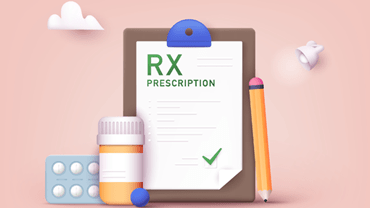 Blog
Blog
Safeguarding Your Workforce: Importance of Disability Insurance
You never know when an accident can happen or your health can take a turn for the worse, disrupting your ability to work effectively. Unfortunately, the human body is fragile and wears with age. That’s why it is crucial for organizations to acknowledge this reality and implement policies and coverages that provide support to their employees in both good and challenging times. Such initiatives prove to be invaluable in safeguarding the well-being of the workforce.
Introducing: disability insurance.
Disability insurance is a type of insurance coverage designed to provide financial protection in the event that an individual becomes disabled and is unable to work. It offers a source of income replacement to help cover essential expenses when a person is unable to earn their regular income due to a disabling illness or injury. Disability insurance policies typically provide a percentage of the individual's pre-disability income, usually ranging from 50% to 70%, allowing them to maintain a certain level of financial stability during their disability.
Employers have been expanding their voluntary benefit offerings over the past few years to address the challenges and financial pressures employees face, especially in the wake of the COVID-19 pandemic and record-high inflation. Among the various voluntary benefits, disability insurance stands out as a crucial option that provides employees with essential protection. Understanding the types of disability benefits and the value they bring can help employers make informed decisions when considering their voluntary benefit offerings.
Types of Disability Insurance
Disability insurance, in essence, provides a guaranteed income or job protection for employees who are unable to work due to a serious injury or illness. Common causes of disability include depression, anxiety, chronic illness, and pregnancy. By providing disability insurance, employers offer a safety net to employees, enabling them to meet financial obligations and support their families during periods of work incapacity.
- Short-Term Disability Insurance: This type of policy typically provides coverage for a shorter period, usually up to six months. It kicks in soon after the disability occurs and provides a percentage of the individual's pre-disability income. Short-term disability insurance is commonly offered as an employee benefit and can help cover immediate expenses during a temporary disability.
- Long-Term Disability Insurance: Long-term disability insurance offers coverage for a more extended period, often until the individual reaches retirement age or is able to return to work. It provides a percentage of the individual's income, typically ranging from 50% to 80%. Long-term disability insurance policies may have a waiting period, known as the elimination period, which is the length of time the individual must be disabled before benefits start.
- Employer-Sponsored Disability Insurance: Many employers offer disability insurance as part of their employee benefits package. These policies can be short-term or long-term and may be fully paid for by the employer or require the employee to contribute to the premium. Employer-sponsored disability insurance often provides a basic level of coverage, but employees can typically choose to purchase additional coverage to enhance their benefits.
- Social Security Disability Insurance (SSDI): SSDI is a federal government program that provides disability benefits to individuals who meet specific criteria. To qualify for SSDI, the individual must have a severe disability that is expected to last for at least one year or result in death. The program is funded through payroll taxes, and the amount of benefit received is based on the individual's earnings history.
- Supplemental Disability Insurance: Supplemental disability insurance policies are designed to supplement existing coverage. These policies can help individuals bridge the gap between their employer-sponsored disability insurance or SSDI benefits and their actual income. Supplemental disability insurance can provide additional financial protection and ensure individuals receive a higher percentage of their pre-disability income.
When considering disability insurance, it's important to review the terms and conditions, such as waiting periods, benefit amounts, and definitions of disability. Working with an insurance professional can help individuals understand their options and choose the policy that best suits their needs and financial goals.
Why You Need Disability Insurance
The value of disability benefits becomes evident when we consider the statistics. According to the Social Security Administration, one in four adults will experience a disability before reaching retirement age. Losing income or facing job loss due to a disability can have devastating consequences for employees and their families. Disability benefits offer financial support during such challenging times, alleviating stress and providing peace of mind.
Moreover, the increasing costs of medical treatments for chronic conditions, disabilities, and serious injuries make disability insurance more critical than ever. Employers who integrate health and disability benefits can improve overall employee health outcomes by coordinating care, enabling early interventions, and reducing absenteeism in the workplace.
By offering disability benefits, employers demonstrate their commitment to employee well-being, enhance attraction and retention efforts, and contribute to a more resilient and supportive work environment. Prioritizing disability insurance is a proactive step towards protecting employees and promoting their overall well-being.
About James Bonsall
James Bonsall joined Keenan in January 2023 with 10+ years of consulting and sales experience coming directly from the Human Capital Management and Benefits Administration software industry. James is now tasked with the exciting responsibility to promote the employee benefits practice for Keenan throughout the state of California with a hands-on approach to managing existing clients, ensuring quality service and consistent communication and support.
Subscribe
Subscribe to the Keenan Blog





